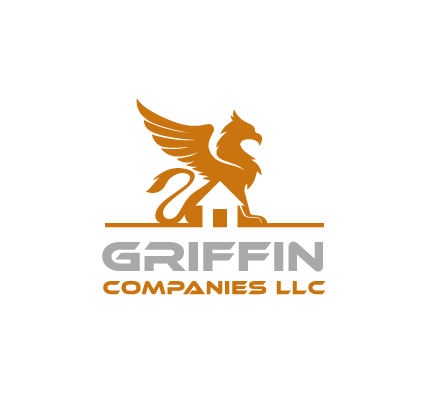
Any variance between the targets and the actual results are analyzed and, where necessary, corrective actions are taken. Deskera allows you to quickly create drop-ship orders for your supplier directly from customer orders. All the product, quantity, and delivery address fields will be auto-populated. All you need to do is update the fulfillment status once the actual shipment is done – Deskera will take care of the rest. Deskera is an intuitive, easy-to-use platform you can utilize to automate not just your costs, but almost every part of your accounting cycle. All costs assignable to a specific customer contract are compiled, documented, and justified.
What are the methods and techniques of costing?

EVA-PBC methodology plays an interesting role in bringing strategy back into financial performance measures. While (ABC) Activity-based costing may be able to pinpoint the cost of each activity and resources into the ultimate product, the process could be tedious, costly and subject to errors. “Throughput”, in this context, refers to the amount of money obtained from sales minus the cost of materials that have gone into making them. These categories are flexible, sometimes overlapping as different cost accounting principles are applied.

Standard Cost Accounting
The objective of cost accounting is to help a company’s management fix prices and control production costs. In this definition, examples of “operating data” include the cost of products, operations, processes, jobs, quantities of materials consumed, and labor time used. This guide will offer you an in-depth explanation of what cost accounting represents, the different cost accounting methods, how you can set up the process for your small business accounting, and much more. An organization determines its cost structure based on how many units it wants to produce. This is called marginal cost, and it’s used to determine whether overestimating a unit of production will affect profits and expenses. Thus, cost accounting provides vital information about the cost of production — including a breakup of materials, plant capacity, labor, and costs.
Cost Accounting vs Financial Accounting
For example, how can a car manufacturer figure out the costs of an individual car series? During the first weeks, participants learn what costs are and how to distinguish them from expenses or cash flows. Participants will understand how companies record total costs and distinguish important cost types such as material costs, personnel costs, or depreciation. At the core of their cost-accounting system, companies allocate overhead costs to individual products.
- Lean accounting is an extension of the philosophy of lean manufacturing and production, which has the stated intention of minimizing waste while optimizing productivity.
- Companies use marginal costing to see how to step up production to maximize profit.
- This is a reasonable definition, but it only addresses the dimensions of technique and process.
- According to this viewpoint, it is not costing but how costing functions, as well as how much it delivers, that is important.
- It can also be used to determine the savings to be achieved from an employee layoff.
- For example, If a company purchased a property 50 years ago for Rs. 10 lakhs, it is now worth Rs. 50 lakhs.
- Cost accounting, as you have probably already realized by now, is an indispensable part of any company’s financial management.
You can use it to understand what creates the most value for your customers and how you can continuously improve. Unit-wise details of costs, their components, and the accuracy of calculations and cost data, which are made available by the costing department, go a long way in helping to determine product and service prices. Although cost accounting—particularly the integrated system of accounting—can ultimately produce financial statements (i.e., profit and loss account and balance sheet), its emphasis is on managerial accounting. A number of costing methods and techniques are used for costing products, cost control, and managerial decisions. Fixed costs are the costs that keep a company running and don’t fluctuate with sales and production volumes.
#3. Prepare for Major Expenses
Financial and cost accounting systems can be differentiated based on their target audiences. Financial accounting is designed to help those who don’t have access to inside business information, such as shareholders, lenders, and regulators. For basics of cost accounting example, retail investors who analyze financial statements benefit from a company’s financial accounting. A direct cost is a cost directly tied to a product’s production and typically includes direct materials, labor, and distribution costs.

Cost Reduction Analysis
- Thus, it is occasionally the case that some fixed assets must be revaluated as a practical matter.
- Direct labor cost also includes the wages paid to those who directly carry out or operate a service, such as a driver and conductor of a bus in the transport business.
- Each item of cost (namely, materials, labor, and expenses) is budgeted at the beginning of the period and actual expenses incurred are compared with the budget.
- Cost accounting assists a company’s management team in carrying out its day-to-day functions of control and formulating business policies.
- TUM was one of the first universities in Germany to be named a University of Excellence.
As a result, companies can rely on cost accounting to understand which products or services are more profitable and which ones need tweaking in terms of pricing or production efficiency. Similarly, if an organization has several departments (production, engineering, sales, design, etc.), cost accounting helps calculate the overheads incurred by each department. Management can then identify the departments that have higher overhead costs and look at ways to reduce these costs. As you know by now, cost accounting involves calculating the total cost of manufacturing a product or service by calculating the cost of direct materials, labor, and overheads. Historical cost accounting is a cost accounting method in which a company records the value of its assets in its financial statements based on the nominal price at which they were originally bought.
Determination and Analysis of Cost

Maintenance costs, taxes, and utility bills are some examples of operating costs. As a business owner, knowledge of your business accounting can help you reduce and eliminate your costs, and help boost productivity. One type of accounting that serves as a valuable tool for lowering your costs and determining the price for your product or service is cost accounting. Cost accounting helps businesses understand where their money is being spent and how this expenditure affects their bottom line.
- It can be used to set pricing models, manage budgets, allocate resources more efficiently, identify areas of potential savings, and compare performance against competitors.
- Methods like Activity-Based Costing (ABC) are commonly used to identify the cost drivers in production, enabling more accurate pricing and profitability analysis.
- All you need to do is update the fulfillment status once the actual shipment is done – Deskera will take care of the rest.
- Management circles became increasingly aware of the Theory of Constraints in the 1980s and began to understand that “every production process has a limiting factor” somewhere in the chain of production.
- We have also looked at the difference between financial accounting and cost accounting while touching upon the skills you need to become a cost accountant.
Companies that operate under the Generally Accepted Accounting Principles (GAAP) have to use the historical cost principle when showing their records. The principle states that accounting records on a company’s balance sheet should be at original transaction prices and should be maintained to serve as the basis for values in the financial statements. Unlike other costing methods which analyze the profitability of an investment https://www.bookstime.com/ on a period basis, life cycle costing traces cost and revenues over several periods. Companies that use life cycle costing are those that place an emphasis on long-term planning so that their accumulated profits over several years are maximized. Operating costs are costs that are incurred in the day-to-day running of a business. They do not directly affect the level of production but without them, a business cannot operate.

